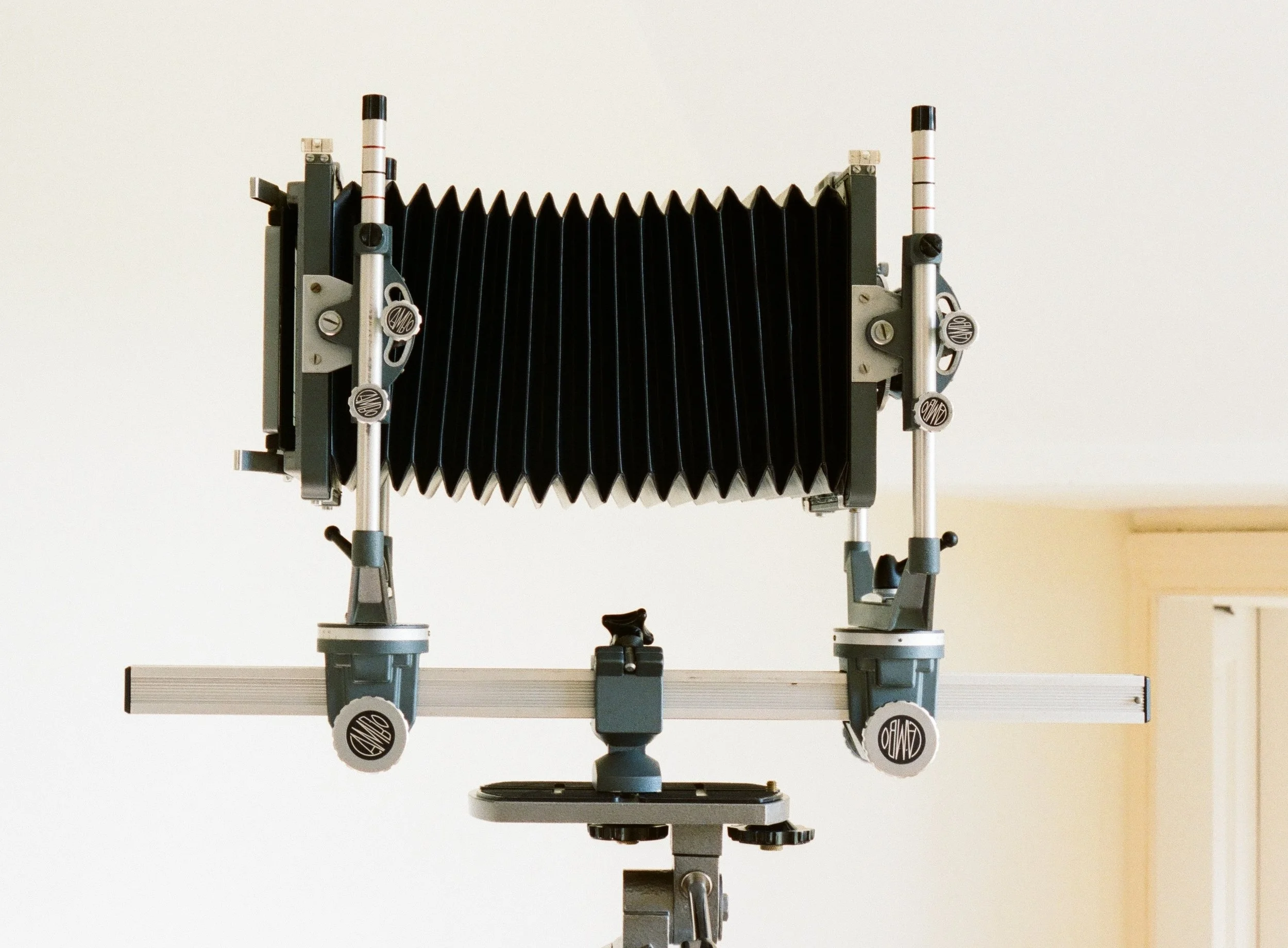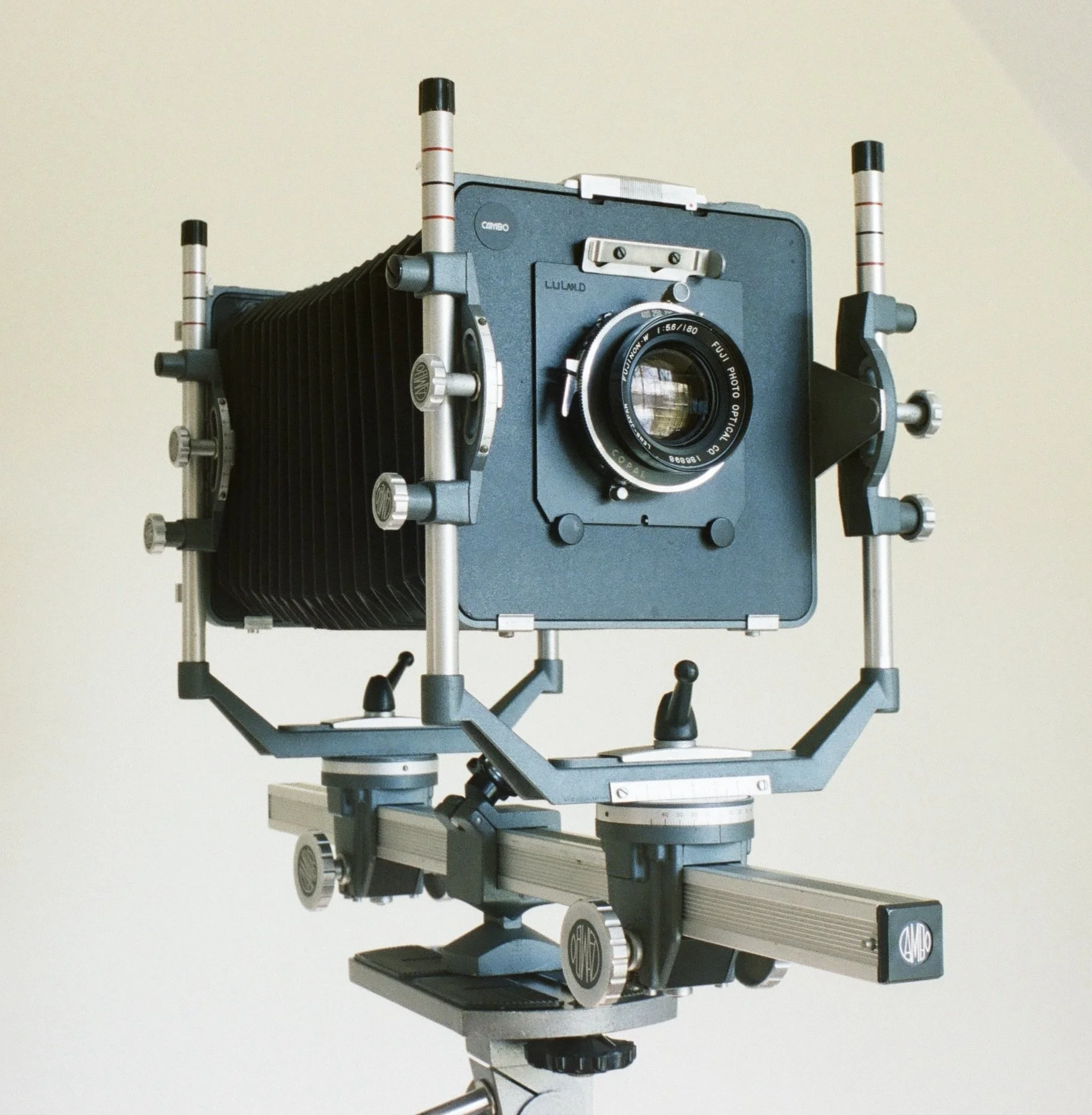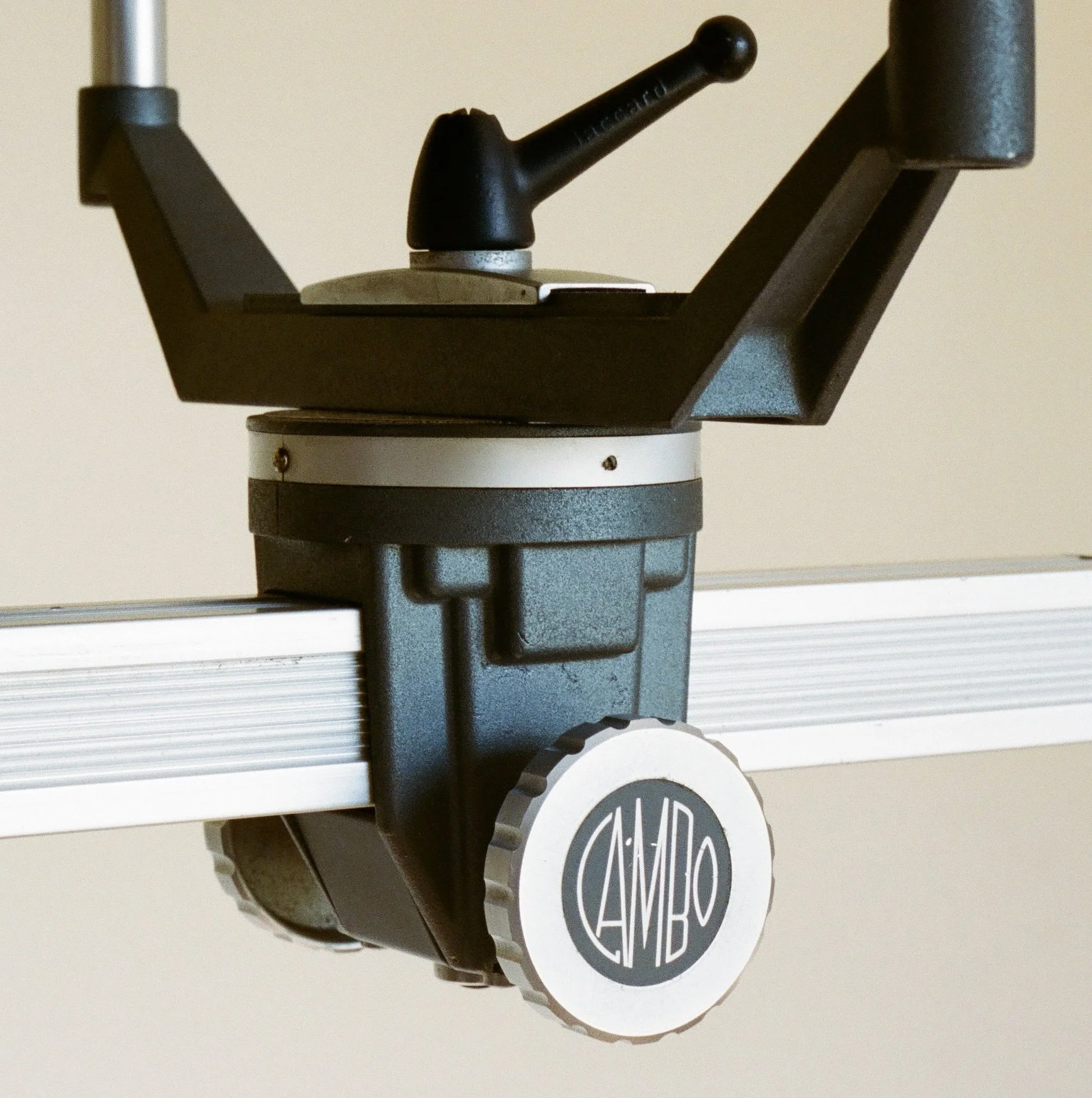4x5 Super Cambo
A modular and intuitive monorail made in the Netherlands.
4x5 Super Cambo on a Gitzo R. No. 4 tripod head. (Color photos of the camera were made with a Nikon F, 55mm f/3.5 Micro-Nikkor-P.C, and Portra 400.)
Aloe plant 4x5 Super Cambo, 180mm f/5.6 Fujinon-W, Harman Direct Positive Paper, 2023.
A no-nonsense design
The Super Cambo is a simple, flexible, modular 4x5 monorail system. The design is straightforward and was in production, with occasional updates, from 1958 until digital took over. Some variants were sold under the Calumet nameplate in the U.S.
4x5 Super Cambo with a 180mm f/5.6 Fujinon-W lens and a Linhof lens board adapter. The Linhof-type lens board is from LuLand.
Typography
When I was a kid I practiced calligraphy and ever since I tend to notice design and style in handwriting and printing. There are cameras that display inventive, attractive typography and the Super Cambo is one of them.
Typography on a focus knob.
4x5 Super Cambo showing the bail back — a useful feature.
Design
The 4x5 Super Cambo has:
Modular design. The rail is one piece but can be swapped out for one of a different length. Other parts are modular and can be swapped out. That includes standards, bellows, back, and rail clamp..
Removable bellows. A bag bellows can be used.
Identical front and rear standards.
Complete movements, none geared. Axis tilts.
Single focus knob on front and rear standards. No separate coarse/fine focus.
Bail back. (The ‘bail’ is a lever that lifts the ground glass frame, making film holder insertion/removal smoother and easier.)
Nearly all metal construction, even including the knobs.
A comparison of three monorails (Sinar F, Super Cambo, Calumet) is on the Sinar F page.
Monorail cameras can be a good value today
‘Cameras such as the Sinar, Cambo, Arca and Linhof are of superior quality — quite costly, but worth every doller if one can afford them’ (Adams, 1970, p. 43). As far as I know, no monorail cameras are in production today and their value on the used market is not high, likely due to their weight and bulkiness. Wooden field cameras like the Tachihara are far more portable.
References / further reading
Camera manual: orphancameras.com — https://cameramanuals.org/booklets/cambo_handbook_large_format_training.pdf accessed Aug. 27, 2025.
More references:
Adams, Ansel. 1970, Camera and Lens: The Creative Approach. Dobbs Ferry, N.Y.: Morgan and Morgan.
Cambo history: https://www.cambo.com/en/about/history accessed Aug. 27, 2025. The 1958 production start date is from here.
Stroebel, L. 1993. View Camera Technique, 6th ed. Boston: Focal Press.




